How to Roast Hatch Chiles
on Aug 16, 2023, Updated Apr 16, 2025
This post may contain affiliate links. Please read our disclosure policy.
Learn how to roast Hatch chiles and everything else you want to know about preparing and cooking this fabulous, super seasonal New Mexican cult favorite chile pepper.
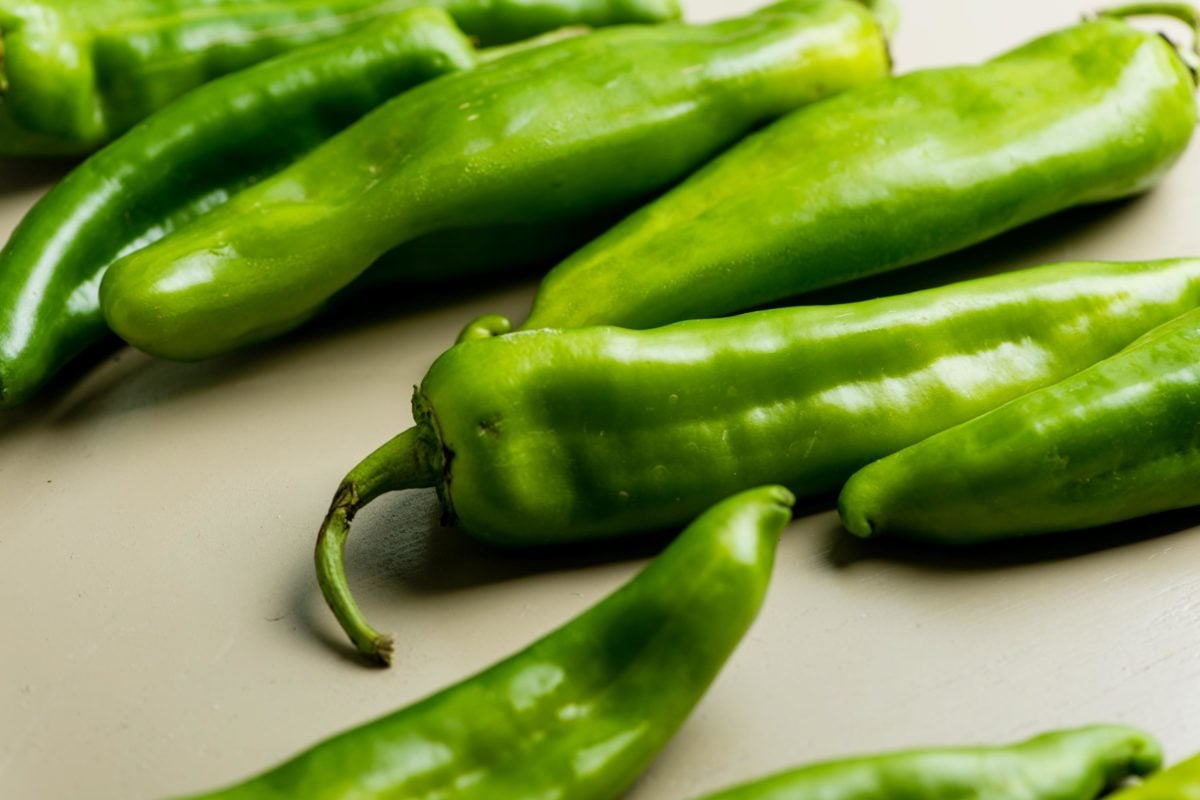
Hatch chiles are a seasonal and regional pepper with nothing less than a cult following in New Mexico, where they are grown. These peppers are earthy, oniony, smoky and range from mild to super hot and everything in between. When you are lucky enough to lay your hands on them, you’re going to want to roast them (in your oven! or on a gas burner! or on the grill!)) and freeze them to you can make use of them all year long.
The flavor of Hatch chiles is sometimes described as earthy or oniony, with smoky undertones, and again, the heat level varies.
By signing up, you agree to our Privacy Policy.
Hatch, New Mexico, is the chile capital of the world, according to Robert Scheuller, my friend and resident produce Guru at Melissa’s Produce. Robert is one of the foremost experts on Hatch chile peppers in the U.S. He says that more chiles (or chilis) are grown per square acre in Hatch than anywhere in the world. Try them in Hatch Chicken Chili or Hot Hatch Chile Dip.
Read on for everything you need to know about this beloved seasonal pepper!
What's In This Post?
- What Are Hatch Chiles?
- When is Hatch Chile Season?
- FAQs
- How to Choose Hatch Chiles
- Where to Find Hatch Chiles
- Dried Hatch Chiles and Powder
- Substitutions
- How to Roast Hatch Chiles 3 Ways
- How to Peel Hatch Chile Peppers
- Storage
- How to Freeze Hatch Chiles
- How to Use Hatch Chile Peppers
- Roasted Hatch Chiles Recipe
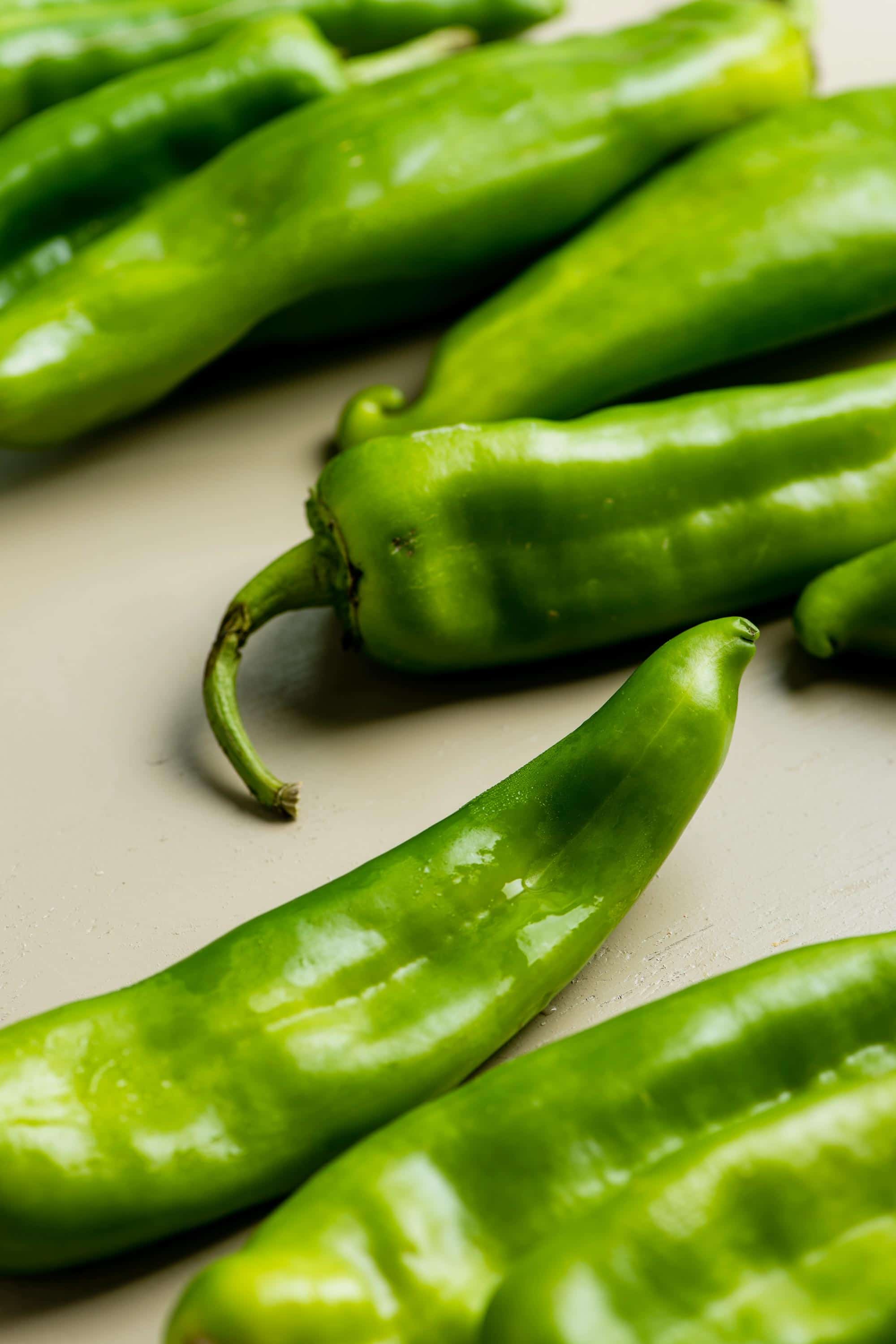
What Are Hatch Chiles?
There are a number of peppers that can be called Hatch chiles. These peppers are all part of the Capsicum family. The specific soil and growing conditions are what make these chilies Hatch chilies. They are very fast growing, thanks to the wide temperature swing from the nights to the days. The temperature fluctuation is due to the 5,550-6,500 foot attitude of this area of New Mexico, which is unusual in chile growing areas.
Specifically, Hatch chilies are grown in the Hatch Valley of New Mexico. Yes, they can be grown in regions just outside of Hatch. The peppers aren’t geographically protected in the exact same way as European DOP products, like Prosciutto or Gruyere cheese. However, purists believe the very best Hatch chiles are grown within the borders of the Hatch Valley region of New Mexico.
Other New Mexico chilies are similar, but thanks to a 2012 law, they should be labeled New Mexican chiles, not Hatch chiles. They might even be labeled “Not Grown in New Mexico” if applicable.
When is Hatch Chile Season?
Hatch chile season typically begins in late summer, at the beginning of August (sometimes late July) running through mid-October. During this time, you can buy fresh Hatch chiles. If you buy them in areas where a lot are sold and used (again, all over New Mexico and the surrounding areas), you will likely buy them by the case. Hatch chile fanatics are only too happy to bring home a case, either getting them roasting them on site where they buy them or roasting them at home and then freezing them.
FAQs
Sometimes there are several varieties of Hatch chilies grown and sold: mild, medium, hot, or extra hot. They can range on the Scoville scale from 2,000 SHU (Scoville heat unit) to 8,000 SHU. The boxes or containers they are sold in should be labeled with the level of heat of the chilies. You won’t be able to tell how hot the pepper is from appearance, so read that fine print!
They are the same pepper, just at different stages of maturity. Red chiles are left on the vine for a longer period of time. They have a sweeter and earthier flavor and are often used in New Mexico for salsas or ground into a powder. The green chiles, on the other hand, are harvested early and roasted for a smokier and more upfront flavor.
While they look very similar, you may be in for a shock if you bite into a Hatch pepper, thinking it to be an Anaheim. More specifically, a very uncomfortable burning sensation; most Hatch chiles are much spicier than Anaheim chiles. Additionally, while both chiles have a slightly sweet flavor, Hatch chiles are often described as having a more robust, earthy, and complex flavor compared to the milder flavor of Anaheim.
The Hatch Chile Festival is a 2-day festival in the town of Hatch which is a celebration of all things Hatch Chiles. In 2023, it will be held from September 1-3, over Labor Day weekend.
People travel to attend from all over the country, even the world. Because it’s an agricultural area, apparently, the town looks like a giant campout, with tens of thousands of people descending upon a pretty small town. And all you eat at the festival are foods made with Hatch chiles, from Chile Rellenos to Hatch Chile Ice Cream. It is 100% on my bucket list!
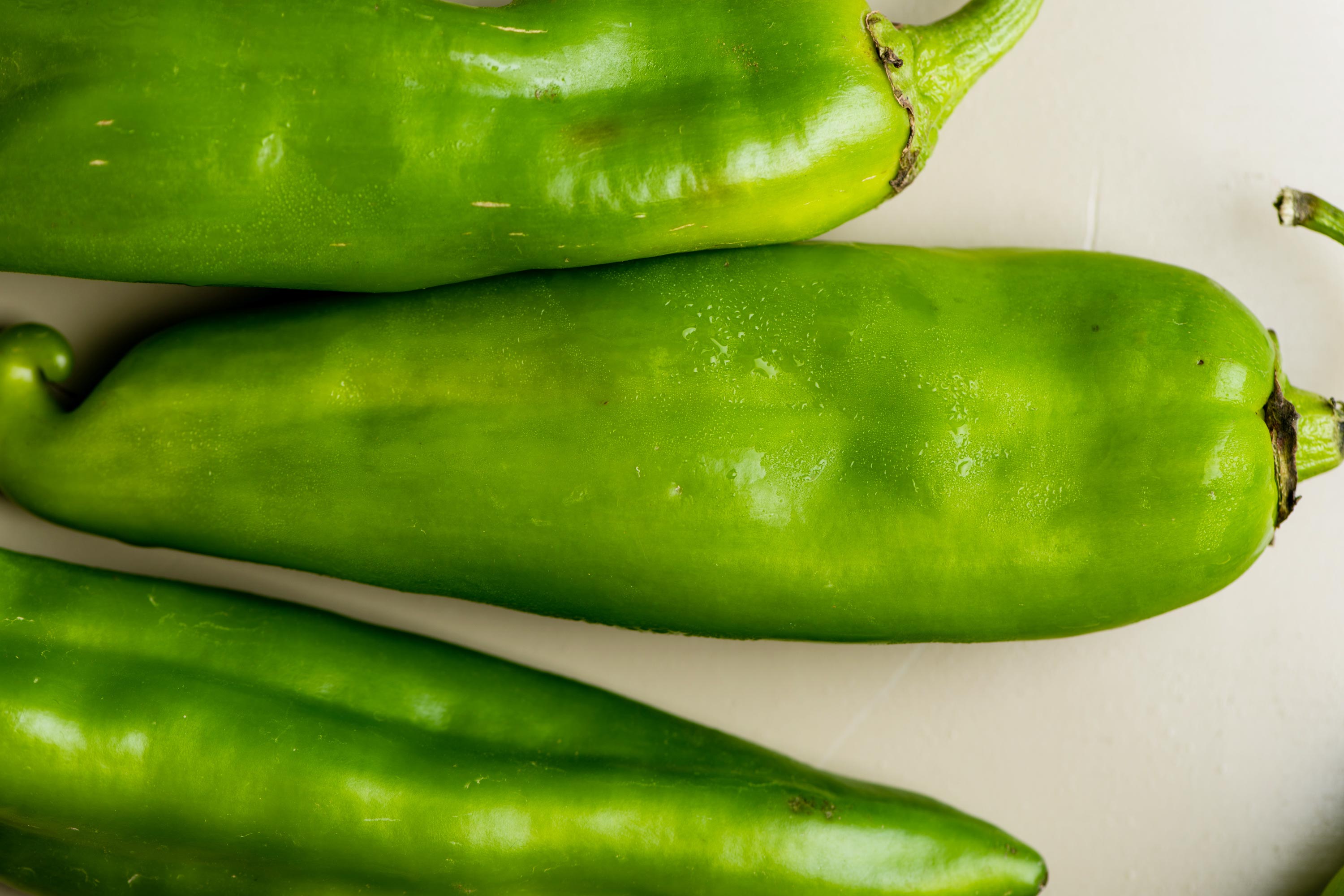
How to Choose Hatch Chiles
Look for hatch green chiles with smooth, glossy, firm skin. No wrinkling or dark spots, or dings. The flesh should be fairly thick.
Where to Find Hatch Chiles
Hatch chiles can be purchased all over New Mexico and in surrounding states for sure. During their short season, due to popular demand, they are available in lots of markets in lots of states.
You can also buy them frozen, usually roasted and frozen. They also may be canned or jarred, having been roasted and peeled first. During the season, they are available via many online sites, including Melissa’s Produce, which is one of the leading purveyors of authentic Hatch Chilies.
What Is a Hatch Chile Roasting?
Because the skin is very thick, the chilies have to be roasted, and the skin has to be peeled for them to be edible (unless you dice them super fine; then you can use them raw).
And once you purchase your Hatch chiles, you can often bring them outside the market, where roasting stations will be set up in the parking lot. There you can get your chilies roasted in large commercial roasters designed for this purpose. Then when you take them home, they are ready to use or freeze. Since Hatch chilies are often sold and purchased by the case (with 25 pounds of Hatch chilies in each), this saves an awful lot of time. During Hatch chile season, there are currently roastings in about 40 states.
You can certainly roast them yourself (see the video for how to do that and the three recipe options for doing it at home below), but if you have the opportunity to attend a Hatch Chili Roasting, don’t miss it.
Dried Hatch Chiles and Powder
Dried Hatch chiles are available year-round. They can be ground into a powder or reconstituted. Their flavor is more concentrated, so you will use less dried Hatch chile than you would fresh. These are great to keep on hand when fresh chiles aren’t in season (and you don’t have any left in the freezer!).
Hatch chili powder is available in red and green varieties, as well as mild and hot in both colors. The red powder is sweeter than the green powder. Use it as you would other pure chile powders. Taste before adding to get a sense of the heat level.
Substitutions
Anaheim peppers look very much like Hatch peppers. They are mild, so can only be used in place of mild Hatch chilies. Poblanos may also be used in place of mild Hatch chiles. Southwestern green chilies are grown all over Southern California, Texas, Arizona, and other places in New Mexico. And of course other types of chiles are grown all over the country, but they are not Hatch Chilies.
Everything you need to know about how to buy, store, roast, peel, and cook with hatch chiles.
How to Roast Hatch Chiles 3 Ways
If you have access to Hatch peppers but not to a batch chile roasting station, you can cook them at home. There are three methods most commonly used — choose the one that works best for you!
You can cook them on a grill, in the oven using the broiler, or on a gas stove. (Only gas will work for this method, not electric or induction). The grill is best for roasting large amounts, but all three methods will get you roasted Hatch chile peppers.
- Grill: Heat a grill to medium. You can use a gas grill or a charcoal grill. Once hot, place the chiles over the open flame and grill them, flipping as you go, until they are blackened and blistered on the bottom. Turn them so that they end up blistered all over> This will take probably about 4 turns, about 10 minutes in all.
- Gas Burner: Turn your gas burner to medium-high or high. Place a couple of the chiles on the burner and cook them until they are charred and blistered on the bottom. Turn them so that they end up blistered all over, about 10 minutes in all.
- Broiler: Preheat the broiler. Place the chiles on a rimmed baking sheet, and place about 6 inches away from the heart source. Broil and turn the chiles so that they end up blistered all over, about 10 minutes in all.
How to Peel Hatch Chile Peppers
It’s best to wear gloves when handling hatch green chile peppers. After roasting or grilling, let them sit on the counter or a cutting board for about 20 minutes to sweat. Then, pop out the stem, and most of the seeds should come right out as well.
If the peppers are the hot variety, and you want to modulate the heat, remove most or all of the seeds. If you like more heat, you can leave some of them in. Then, peel the skin off.
Once they are grilled or roasted, they can be seeded, and then you may puree them, dice them, or use them whole or in larger pieces. Or, you can then freeze the chiles.
Storage
Fresh Hatch chilies may be stored in the refrigerator in a plastic bag for up to 2 weeks, and then you have to use them or roast or grill them and freeze them. Roasted chiles can be stored in the fridge for up to 5 days in an airtight container. If you have a vacuum sealer, this is a great place to use it, which will extend the life of the roasted peppers in the fridge or freezer.
How to Freeze Hatch Chiles
Once either grilled or roasted, they can be frozen. Again, once seeded, you may puree them, chop or dice them. Or, lay them flat in a single layer between layers of parchment or wax paper and then freeze them in a freezer-proof container or sealed freezer bag.
Try to remove any excess air from the container or freezer-proof plastic bag you are storing the chilies in before you freeze them. They will keep in the freezer for up to 1 year, just in time for you to lay in your new supply of hatch peppers (just in time for the next Hatch chile season). Use roasted chiles in your favorite recipes.
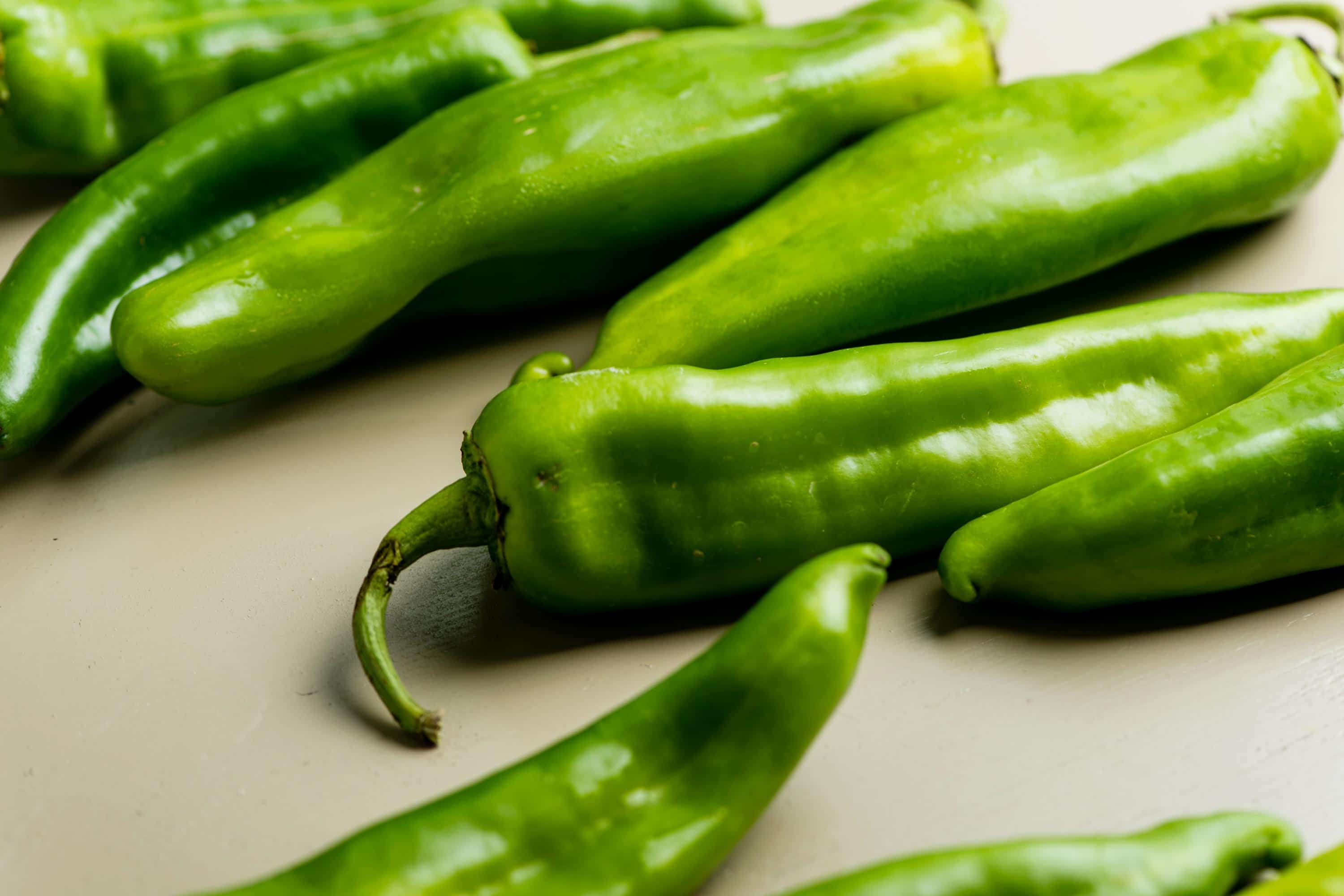
How to Use Hatch Chile Peppers
Hatch chilies can be used in all kinds of ways. They are almost always roasted before using them (directions for that are below). You can use them to make chilis rellenos, Baked Chicken Flautas, and various types of chili. Once roasted, they can be added to salads, grain salads, gazpacho, guacamole, soups, stews, dips, and sandwiches.
Pin this now to find it later
Pin It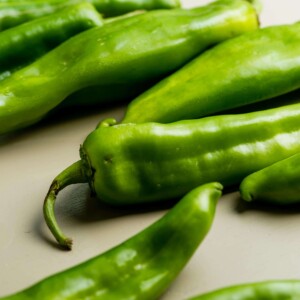
Roasted Hatch Chiles
Video
Ingredients
- 20 Hatch chiles (or any amount!)
Instructions
- To Grill Hatch Peppers: Preheat the grill to medium-high. Place the chiles on the grill grates, and grill (or roast) until the bottoms are blistered and blackened in spots, about 4 minutes. Turn the chiles over and grill until the other sides are blistered and blackened in spots. Use tongs to transfer the chiles to a bowl, and cover the bowl with foil, plastic wrap, or a clean dishtowel. Let sit for about 20 minutes, then pull out the stems, pulling out all of the seeds (or leaving some in, as desired, for more heat). Peel the skin from the peppers. Use as desired or freeze (see directions for freezing above).
- To Broil Hatch Peppers: Preheat the broiler, and place the top oven rack about 6 inches from the heat source. Place the chiles on a rimmed baking sheet lined with foil. Broil until the tops are blistered and blackened in spots, about 4 minutes. Turn the chiles over and broil until the other sides are blistered and blackened in spots. Use tongs to transfer the chiles to a bowl, and cover the bowl with foil, plastic wrap, or a clean dishtowel. Let sit for about 20 minutes, then pull out the stems, pulling out all of the seeds (or leaving some in, as desired, for more heat). Peel the skin from the peppers. Use as desired or freeze (see directions for freezing above).
- To Cook Hatch Peppers on a Gas Stove: Turn the burner (or burners) to medium-high. Place the chiles directly on the burner, and roast until the bottoms are blistered and blackened in spots, about 4 minutes. Turn the chiles over and roast until the other sides are blistered and blackened in spots. Use tongs to transfer the chiles to a bowl, and cover the bowl with foil, plastic wrap, or a clean dishtowel. Let sit for about 20 minutes, then pull out the stem, pulling out all of the seeds (or leaving some in, as desired, for more heat). Peel the skin from the peppers. Use as desired or freeze (see directions for freezing above).









This was just what we needed after buying chiles in Hatch on the way home from camping at Elephant Butte Lake State Park.
excellent!
I’m looking for recipes for hatch chiles, not just the way to roast and peel them. Do you have any recipes? Thanks.
I will by Hatch season next year! It’s on the to-do list!
I was told that the Chile powders needs to be refrigerated. Is that true?
not dried ones, no, but keep them in a cool dim place!
Thank you for posting this. Looking to make my own low sodium salsa. What would you recommend for a recipe?